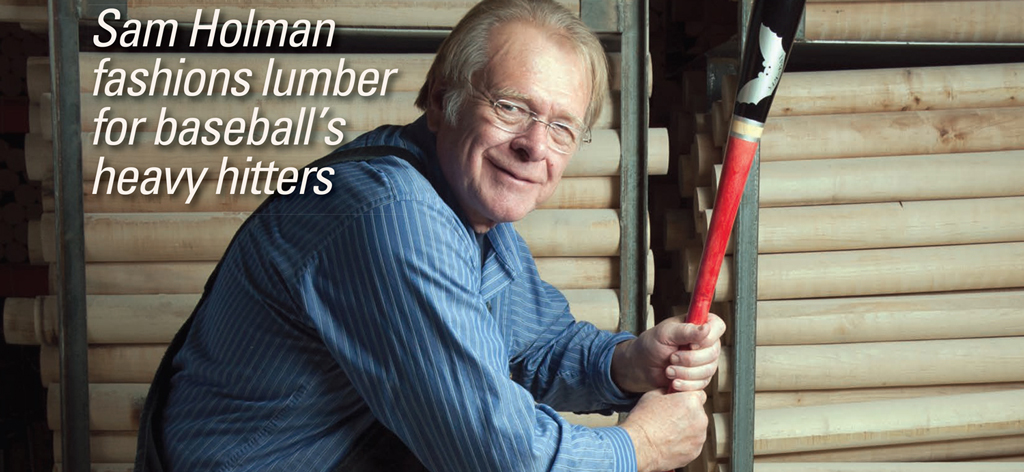Inside the Story
Rio de Janeiro: 6 Breathtaking Views That Redefine Perspective
From rooftops to sidewalks, from solitude to the city’s pulse — our perspective shapes the stories we tell. During my first visit to Rio de Janeiro in 2019, I was drawn to the rhythm of daily life unfolding below and around me. These six photographs, taken from different vantage points, are an exploration of perspective, scale, and emotion. Together, they offer a narrative about space, people, and the quiet poetry of observation.
The Shoreline
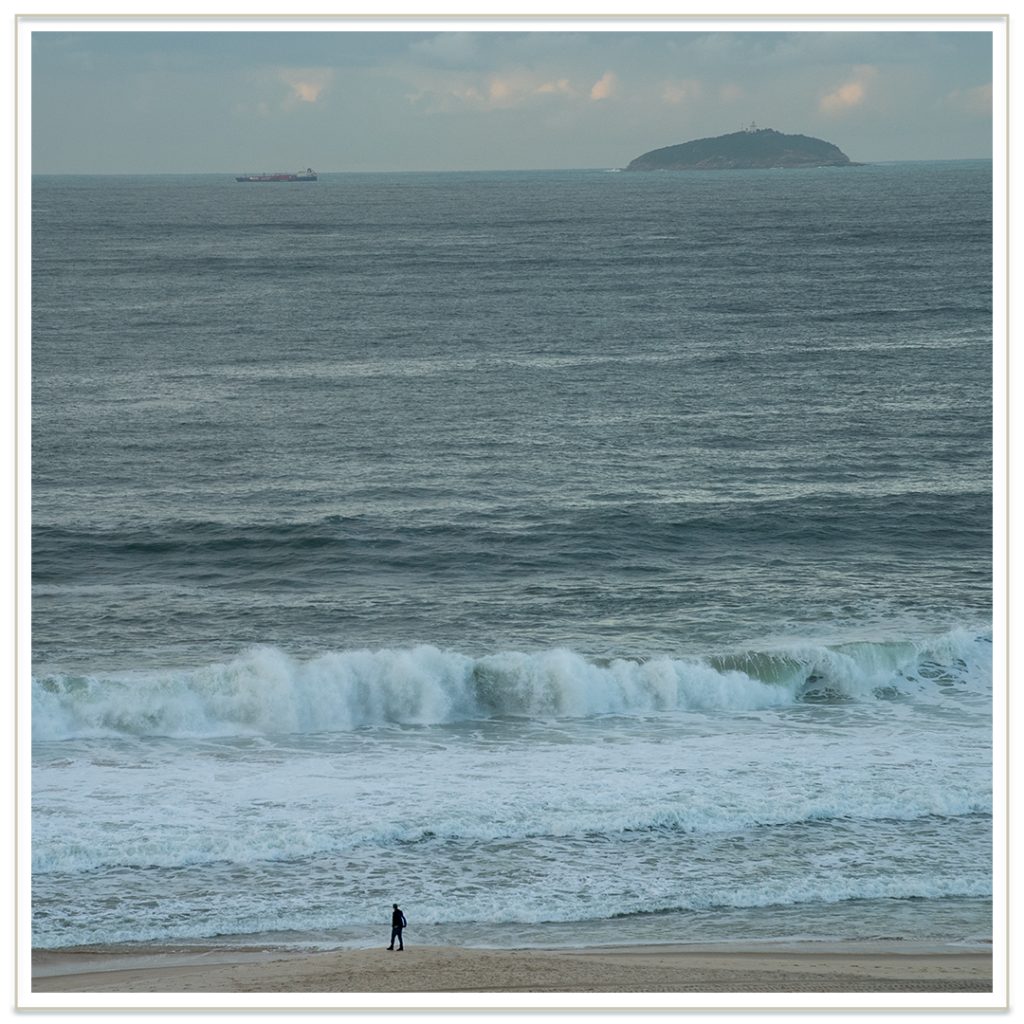
A lone figure stands before a vast ocean, dwarfed by crashing waves and distant ships. This frame captures a moment of contemplation and solitude, where human presence becomes a whisper against the vastness of nature.
As I stood nearby, I couldn’t help but reflect on the complex relationship between locals and this ever-present element. The ocean offers a source of leisure, beauty, and even income for many, but also brings unpredictable weather and rising tides. This space, open to all, is a powerful equalizer — a place where daily life intersects with the sublime.
Balcony & Christ the Redeemer
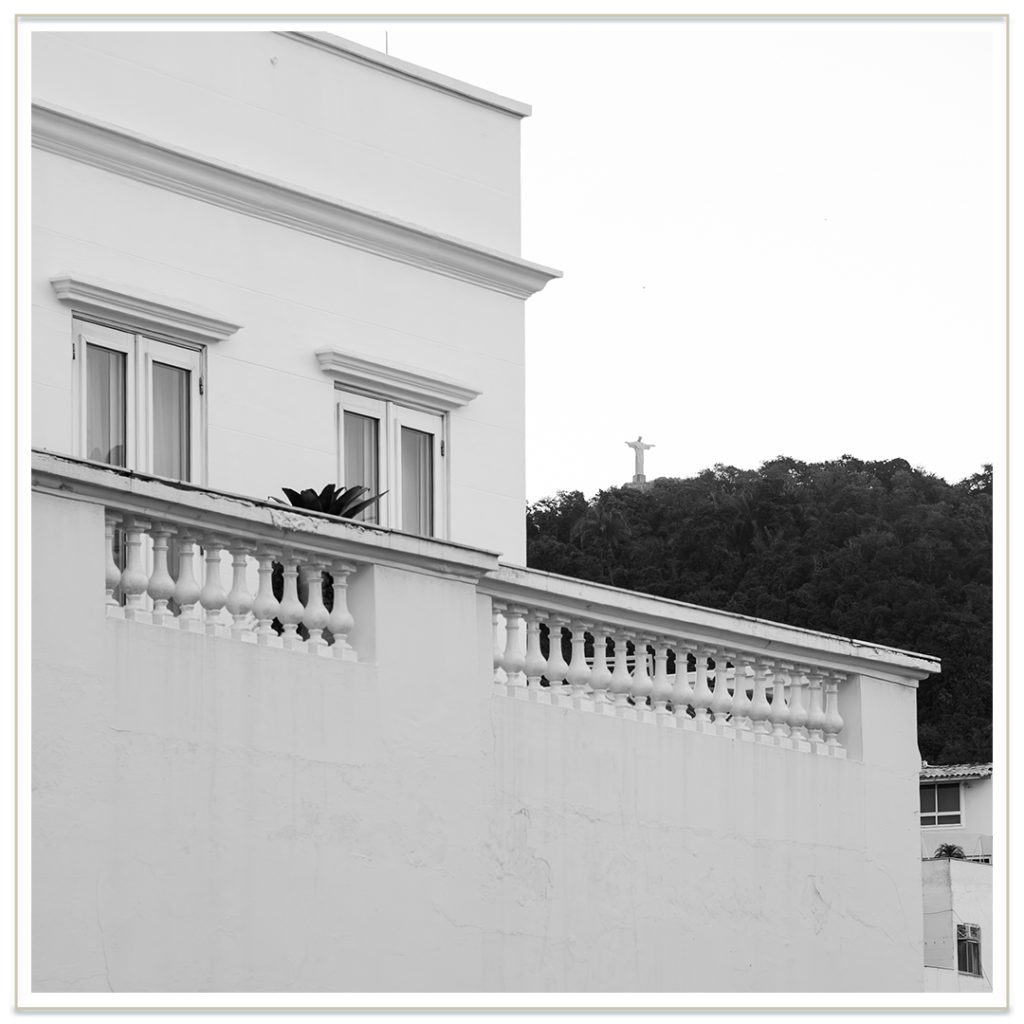
From a quiet rooftop, a distant view of Christ the Redeemer peeks through. Framed by the architectural geometry of a white-walled balcony from Copacabana Palace Hotel, this black-and-white image contrasts intimacy and grandeur, stillness and spiritual symbolism.
As one of the most recognizable landmarks in the world, the Christ statue draws millions of tourists annually. But viewed from this quiet perch, it felt more like a guardian silently observing the city’s shifting stories than a destination. The juxtaposition offered a rare, intimate moment of reflection.
The Crosswalk
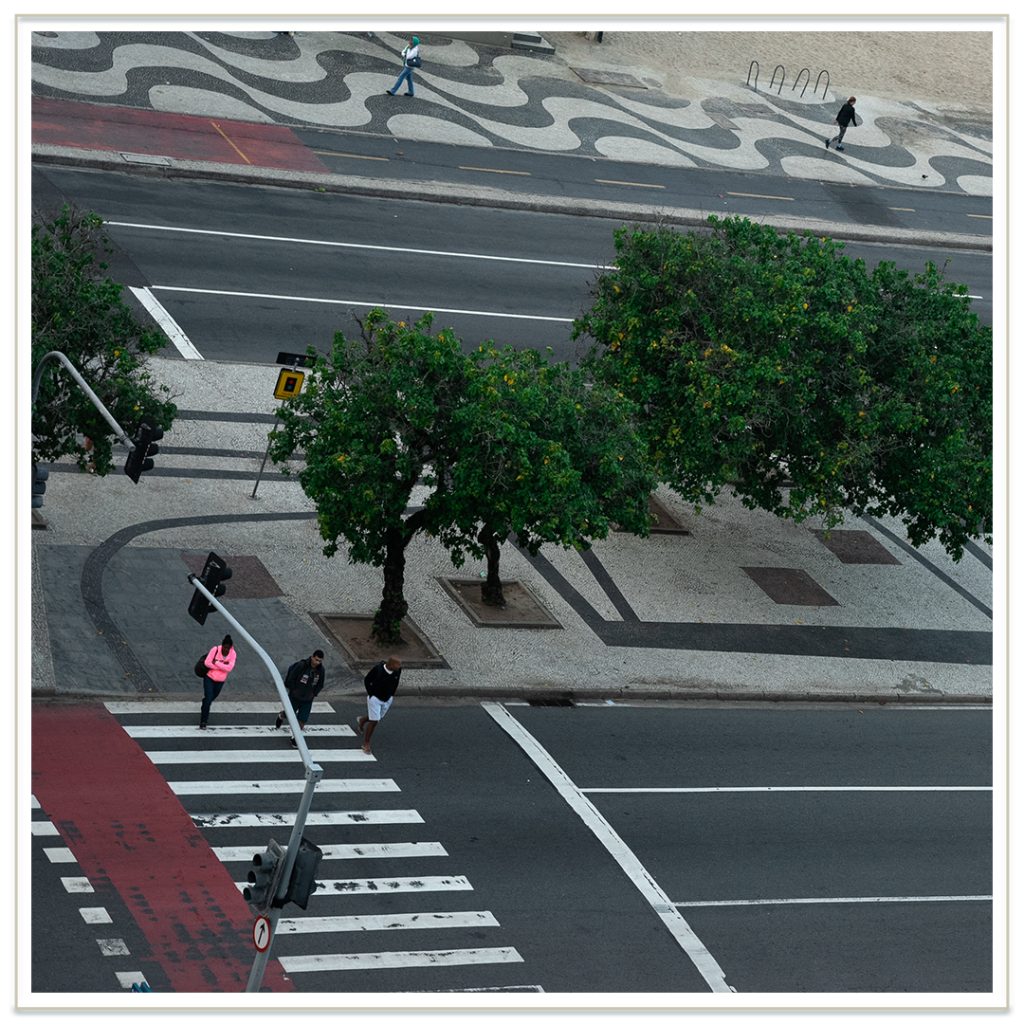
Shot from above, pedestrians cross beneath a canopy of trees and patterned sidewalks. The movement below suggests choreography: a daily dance of city life. The graphic design of Rio’s famous mosaic sidewalks plays against the human flow.
These early morning scenes were filled with joggers, dog walkers, and families beginning their day. There’s a beautiful tension between the structure of the urban plan and the fluidity of human motion — a reminder that cities breathe through the habits of their people.
Night Street Scene
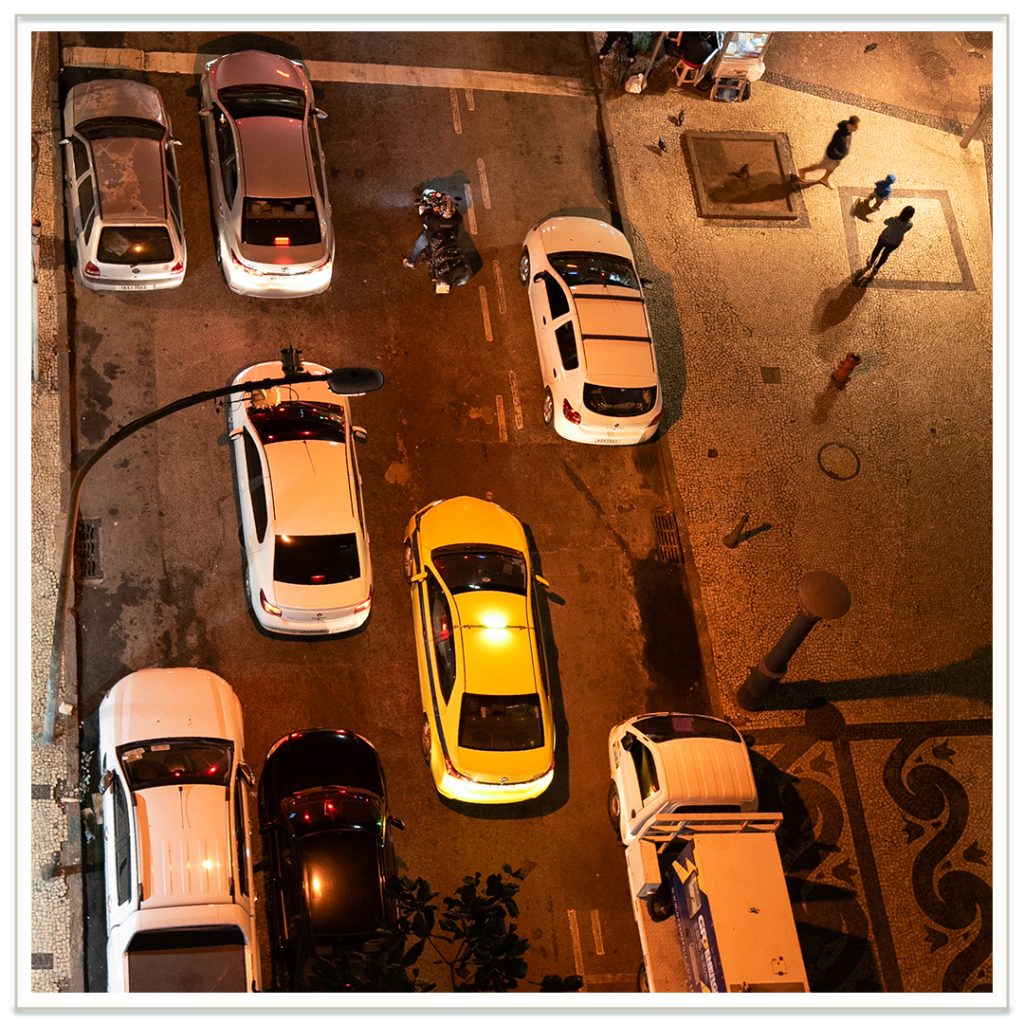
A bird’s eye view of parked cars and pedestrians under warm streetlights. The yellow taxi creates a visual anchor, while figures wander in and out of pools of light. It’s a study of urban patterns and nocturnal life.
Rio is a city of over 6 million residents, and at night, its character shifts dramatically. The pulse of the day gives way to a slower rhythm — one that still hums with life. This image captures that transition, from hustle to hush, illuminated by amber glows.
The Morning Curve
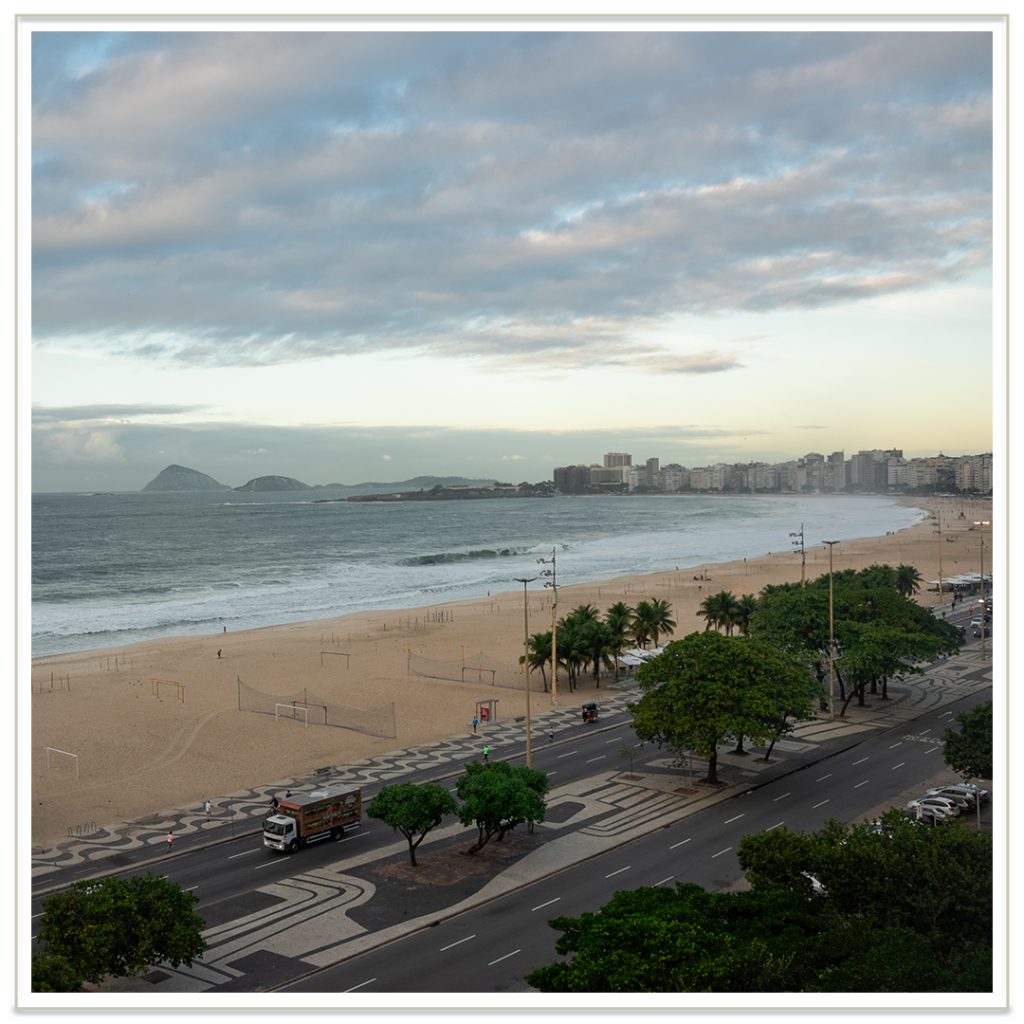
Taken in early light, this image looks out over Copacabana’s iconic curve. Soft hues and long shadows echo the promise of a new day. It’s a gentle counterpart to the nighttime version, reminding us that every place changes with time.
Mornings along the shore are filled with movement — people exercising, greeting friends, sipping coffee from vendors along the way. There’s a collective ritual in how the city wakes up, especially near the beach, where the horizon feels like an open invitation.
Copacabana at Night
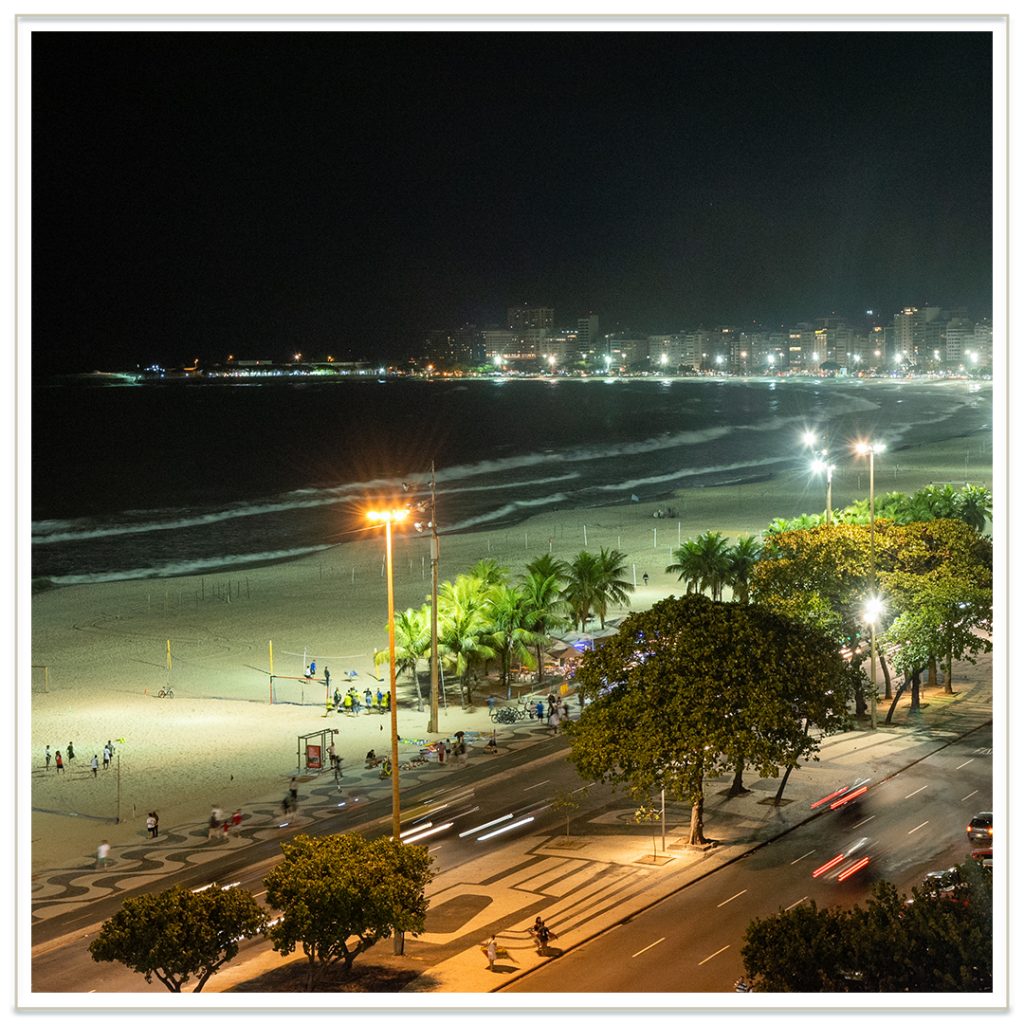
Streetlamps illuminate the shore as beachgoers linger into the evening. This image captures the resilience of public life — how even as night falls, the beach remains alive with conversation, light, and movement.
Locals and visitors alike share in the ritual of nightfall: eating salgadinhos, sipping caipirinhas, laughing under the stars. It’s a place where the lines between leisure, culture, and celebration blur into something beautifully communal.
Final Reflection
This photo essay is more than a visual experiment — it is an invitation to pause, to look again, and to consider how shifts in vantage point reveal new stories. Whether on foot, from a window, or high above the streets, each image is a reminder that perspective transforms the familiar into something quietly profound.
That said, my creative journey was also shaped by the very real contrasts that exist in Rio. Safety was a constant consideration. As a foreigner, I was frequently advised not to explore alone or enter certain areas. This caution, while necessary, also created limits — reducing the freedom to wander, to discover, to fully absorb the city’s texture. Nonetheless, the kindness of the locals and the vitality of their routines offered rich insight into a place alive with culture, rhythm, and spirit.

